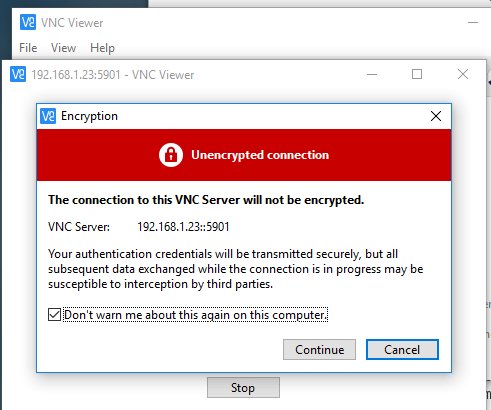

- #Vnc connect installed windows 7 no dialog no setup install#
- #Vnc connect installed windows 7 no dialog no setup full#
- #Vnc connect installed windows 7 no dialog no setup license#
- #Vnc connect installed windows 7 no dialog no setup download#
We will now try to connect to our virtual machine using the tigervnc client. If everything is fine, you should end up with something like thisĬlick on image for better resolution Connecting to the Virtual machine using TigerVNC clientĪlmost there. First ensure that your target virtual machine is running and using the telnet client, try to perform a connection to the Proxmox VE host specifying the port you’ve defined in the /etc/nf file. To ensure that the Proxmox VE host will be accepting incoming vnc connection, you can perform the following test. To check that you have installed the utility correctly, you can open the start menu and locate the TigerVnc Viewer reference. In the finish page, you simply press Finish.
#Vnc connect installed windows 7 no dialog no setup install#
In the Ready to Install page, Press Install

We only want to have the vncviewer installed (and not the vncserver part) In the additional tasks, uncheck the checkboxes. In the Start Menu Page, accept default and Press next In the Select destination location, accept default or choose a location and press Next
#Vnc connect installed windows 7 no dialog no setup license#
In the license Agreement Page, Accept and Press Next
#Vnc connect installed windows 7 no dialog no setup download#
When you have download the utility, double-click on the exe (I’m assuming that you have chosen the Windows version) and the installation wizard will start Howerver, we recommend you to use the version 1.1.0 because it’s seems to be the most complete and most stable one. You can download the latest version of the utility here. This vnc client will probably be part of my Toolbox kit from now on. It’s the first time I’ve been used this vnc client and I’m really happy with it. The Proxmox Wiki mention that a working client would be the TigerVNC. Well known vnc client such as RealVnc or TightVNC cannot be used in this scenario because they do not support (yet) TLS authentication mechanism. In order to connect to the virtual machine from an external vnc client, the client needs to support authentication. You perform this action by issuing the following commandĭownloading and installing TigerVNC client

You can edit the file and add the following line at the bottom of the configuration file In my example, I will need to connect to the Virtual machine with ID 104 and I will assign the VNC port (where to listen to) to 59004.

In our situation, installing this package will ensure that the Proxmox VE host listen to incoming VNC incoming requests. The daemon configuration file will allow you to tell which program needs to run when an incoming request is received. In a few words, this package will install a network daemon program that will manage incoming network connections. On the Proxmox VE host, we will need to install the openbsd-inetd package. I did not try this on previous version so I do not know if this would work. We assume that you have Proxmox VE 2.x installed. This post will try to explain how you can implement this configuration…Ready ? So, let’s go ! Preparing the proxmox VE host So far, the only workaround I’ve found here is to install an external VNC viewer client and perform the connection from this vnc client. In some cases, It simply not possible to perform installation or configuration activities because you missing the screen part where you need to click on a button or perform a choice or provide information. Using some workarounds we were able to proceed with the installation and the configuration of the virtual machines. I already mentioned, this issue in a previous post. The web based VNC viewer cannot be resized. I can see only a portion of the screen and not the rest.
#Vnc connect installed windows 7 no dialog no setup full#
Howerver, the vnc viewer does not return the full desktop or screen interface. I can launch the vnc viewer and connect to the virtual machine. Recently, I’m encountering some small issues wit the web based VNC Viewer available within the Proxmox VE management interface.


 0 kommentar(er)
0 kommentar(er)
